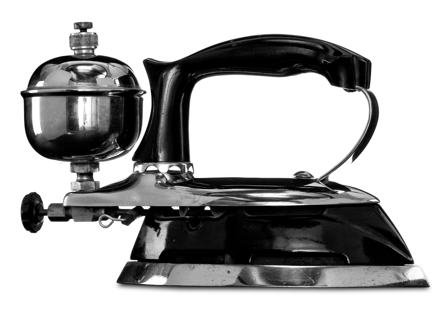Open to all Ivey HBA, MBA, MSc, MMA, EMBA and PhD students
Background
The Ivey Energy Policy and Management Centre at Ivey Business School, in partnership with Peter Tertzakian and his personal online museum at www.energyphile.org, are pleased to announce the third annual Energyphile story competition.
Ivey students are invited to submit a short story on the topic below by February 23, 2022. The winners will receive a total PRIZE of $2,500 and have their stories considered for publication as part of Peter Tertzakian’s Energyphile collection of stories about energy in Canada. Submissions will be judged by a panel of Ivey faculty and Peter Tertzakian.
The Competition
Using the historical artifact below, write a story of up to 1,500 words total that provokes the reader to think about our energy future using lessons from our energy past.
THE ARTIFACT: COLEMAN GASOLINE IRON

Imagine being told to “use a good grade of fresh, clean gasoline” in your iron. That was the Coleman company’s tip to its customers in 1939. Petroleum fuel was poured into the fount and pressurized with a syringe-like air pump injected into the top. Lit with a match, the appliance was ready to press. Not quite as easy as plugging it in, but more convenient than its stove-heated predecessor.
It may seem curious that self-heating gas irons sold well into the mid-1900s, even though electric models had been introduced over 50 years earlier. But an Instant-Lite model like this one was a reliable, preferred option in regions lacking dependable electricity (or electricity in general).
There are at least two things to learn from this historical vignette:
- The availability of regional energy supplies often dictates the energy appliances people choose and use. If fossil fuels are readily available, people tend to use them preferentially.
- In the solution set of carbon-free energy alternatives, electrification is a word that is used a lot today. This Coleman iron example shows that electrification and converting to electrical appliances is nothing new. However, the length of time it took to adopt electric irons demonstrates that not everyone is willing to convert their appliances with haste.
The Energyphile vignette may be found at:
https://philespace.energyphile.org/vignette/V0110
Vignettes with related themes are:
Hard-Working Appliance: https://philespace.energyphile.org/vignette/V0127
Ironing Out Our Energy Transitions: https://philespace.energyphile.org/vignette/V0106
A Coveted Energy Appliance: https://philespace.energyphile.org/vignette/V0021
Fuel of Choice for Remote Locations https://philespace.energyphile.org/vignette/V0182
The Story Competition
Imagine that you are invited to a relative’s house for a family dinner. Your hosts are Uncle Bob and Aunt Susan. You arrive and note that they are cooking on a natural gas stove. Their 10-year-old house is also heated with natural gas, as is their water heater. The fireplace is on for festive cheer, also fueled by gas.
You are asked to go to the extra fridge in the garage to get a couple of beers and note two large, late-model SUVs, one for each of Bob and Susan. One is fueled with diesel; the other, gasoline.
Your uncle and aunt are well off, but not wealthy. However, you just overheard that they are thinking of buying a 25-foot boat powered by twin marine engines.
Everyone sits down to dinner. One of your other relatives looks over to you and says: “I heard you’re studying business at Ivey.”
“Yes, that’s right,” you reply confidently. You go on to explain, “At least 20% of carbon emissions come from households. Canada needs to hit some aggressive reduction targets by 2030 and I’m studying how we can convince people to reduce their home emissions.”
Write a story from your first-person perspective. Imagine the dinner conversation that follows and write about it.
Guidelines
- Use a creative non-fiction style of writing. Underscore the word creative; this is not meant to be a dull essay. Any length is fine to a strict limit of 1,500 words. For examples of writing style, consider the stories in the Energyphile collection at www.energyphile.org/stories/.
- By the end of your story (you can end it any way you like) the reader should have learned something about opportunities and/or challenges in energy transition.
- Write your story to endure. In other words, decades from now a reader should be able to read your story and appreciate the same lesson at the end.
- Don’t forget to think about the balance between social, environmental, technological, political and economic factors.
- As you write, think about the example of the Coleman iron and its relevance to your conversation.
- Feel free to research quantitative and qualitative information that may be relevant to your story.
Other Important Details
- Stories must be submitted to Laura McLeod, Coordinator of the Ivey Energy Centre, at lmcleod@ivey.ca by February 23, 2022.
- The competition is open to all Ivey HBA, MBA, EMBA, MSc, MMA and PhD students. Students may submit jointly authored stories, and are welcome to co-author across programs and faculties at Western University; however, at least one student must currently be at Ivey.
- The total prize money for the winning essays is $2,500, to be allocated by the judging panel.
- The Ivey Energy Centre and Energyphile will have the right to publish the prize-winning submissions.
